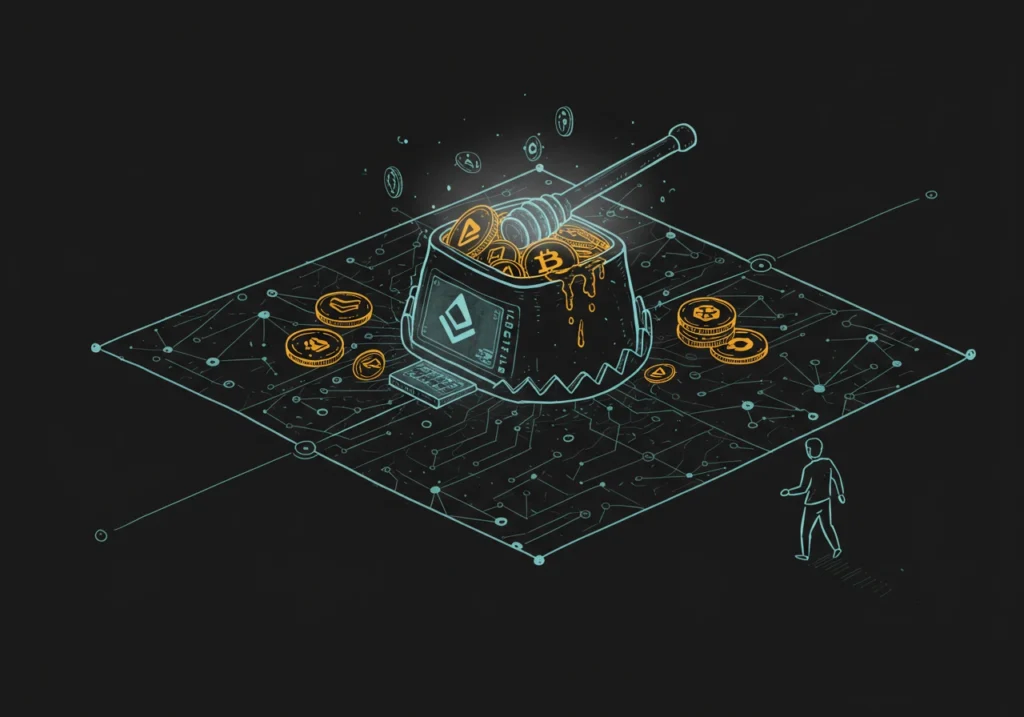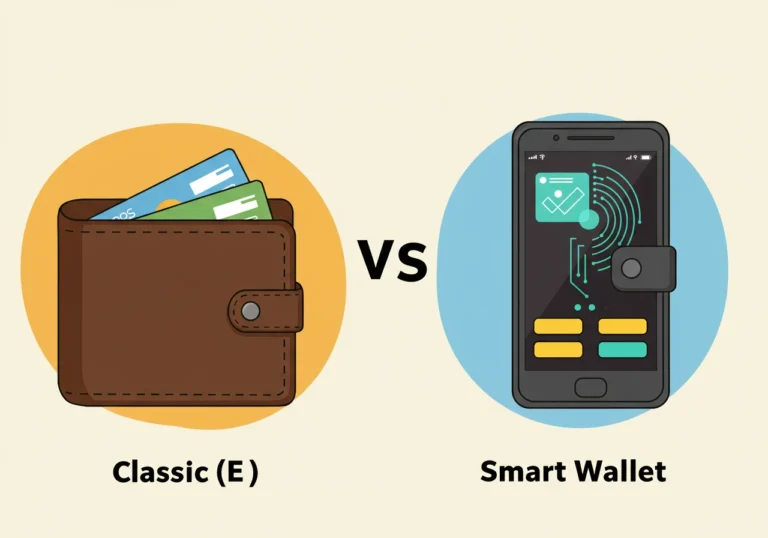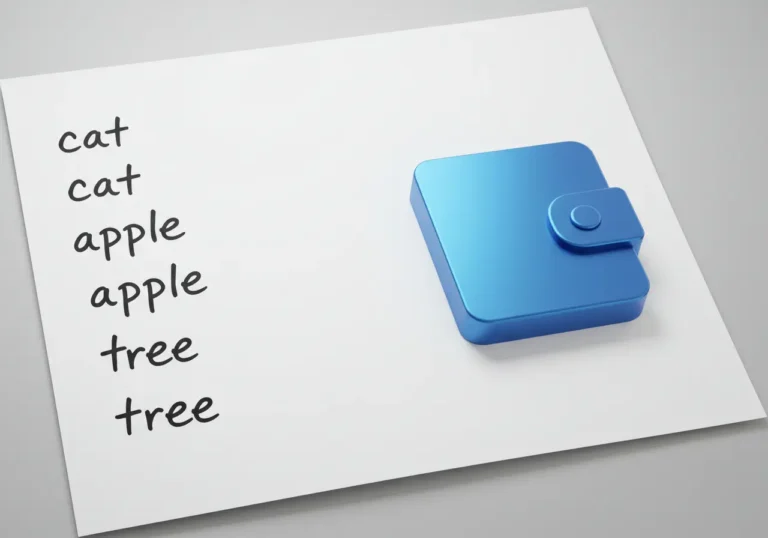How to Spot a Honeypot Scam: A Guide to Staying Safe in Crypto
Honeypot Scam is a type of crypto fraud where a token lets people buy but not sell. It looks like a great opportunity at first, but once money flows in, sellers can’t retrieve their funds. The creators then drain the pool, and investors are left holding tokens they cannot sell. Knowing what to look for can keep your wallet intact.
What a honeypot scam looks like

A honeypot scam often follows a familiar pattern. Scammers create a token and list it on a decentralized exchange. They show charts, a fancy website, and promises of fast growth. People buy, prices go up, and many believe the project is real. But when investors try to sell, the smart contract blocks the sell function or imposes huge fees. The scammers then withdraw funds. The token’s value collapses and buyers lose their money.
This makes honeypots especially cruel because they use trust-building signals — websites, social pages, influencers — to lure people in. That’s why spotting early warning signs matters.
Simple checks to identify crypto honeypot scams
You don’t need to be a developer to perform useful checks. Here are practical steps anyone can do.
1. Read the token contract (or ask someone to)
The token’s smart contract contains the rules. If you don’t read code, use reliable tools or ask a trusted community member to check whether the contract allows selling. Some online scanners flag suspicious contracts. If a contract is not verified on block explorers (like Etherscan), treat it as suspicious.
2. Check liquidity and ownership
Look at the liquidity pool. Is a large portion of liquidity controlled by a single wallet? If the dev owns the liquidity or can remove it, that’s a red flag. Also, check ownership and admin privileges on the contract. Can the owner change rules or block transfers?
3. Try a tiny test trade
If everything seems okay, try buying a very small amount first — enough to test if selling works. If you cannot sell the small amount, do not invest any more. This simple step has saved many people from bigger losses.
4. Verify the team and community
Is the team real and transparent? Do team members have verifiable identities and track records? Genuine projects usually have clear links to developers, public profiles, and an active, reasonable community. If profiles look fake, or if social channels are suddenly silent, be cautious.
5. Beware of marketing pressure
If the project uses aggressive promos like “buy now or miss out” or spammy messages in chats, take it as a warning. Scammers use urgency to bypass common sense.
Red flags in crypto investment schemes
Some clear red flags in crypto investment schemes include:
- Anonymous team with no verifiable history.
- Unusually high promised returns with little explanation.
- Locked or unverifiable liquidity.
- Contract not verified or containing suspicious code.
- No formal audit or a fake audit claim.
- Social channels with bots, fake followers, or overly hyped messages.
- Unexplained tokenomics or heavy developer control over key functions.
If you find one or more of these signs, step back and research more.
Common tactics used by crypto scammers
Knowing common tactics used by crypto scammers helps you spot patterns:
- Fake audits: Scammers post fake certificates or claims of auditing by reputable firms. Always confirm with the auditor’s website.
- Impersonation: Scammers create profiles that mimic real people or firms. Double-check URLs and handles.
- Rug pulls: Creators provide liquidity and later withdraw it, collapsing the token price.
- Phishing links: Scammers send links to fake websites that steal private keys or ask you to approve malicious transactions.
- Pump-and-dump groups: Coordinated buying drives the price up, only for insiders to sell at the peak while others lose out.
If something feels orchestrated or too polished for a small team, be careful.
Tips for spotting fake crypto projects

Here are practical tips for spotting fake crypto projects:
- Use block explorers to check contract verification and transaction history.
- Look at token holder distribution — many tiny holders and one huge wallet can be a red flag.
- Check whether the contract allows transfers and selling.
- Investigate the project roadmap and see if it’s realistic.
- Ask honest questions in the project’s community and see how the team responds. Vague answers are concerning.
- Seek third-party opinions from reputable sources and independent community members.
Small, steady research defeats most scams.
How to avoid cryptocurrency investment fraud
To avoid cryptocurrency investment fraud, build safe habits:
- Use trusted, well-known exchanges and wallets. Keep only a small trading balance on exchanges.
- Double-check token addresses before trading. Scammers often create tokens with very similar names and addresses.
- Do not rush. Pause before any investment that pressures you to act quickly.
- Keep private keys and seed phrases off the internet and never share them.
- Consider using hardware wallets for long-term holdings.
These practices form a strong safety net.
Practical example: a simple review checklist
When you first see a promising token, run this quick checklist:
- Is the contract verified on a block explorer?
- Can I find who created the token and do they look legitimate?
- Does the liquidity look locked and distributed?
- Are there independent audits or respected community endorsements?
- Can I sell a tiny test amount?
- Is the project’s promotion aggressive or suspicious?
If the answer is “no” to any of these, treat it as higher risk.
What to do if you fall victim
If someone falls into a honeypot or scam, options are limited but still worth trying:
- Immediately report to the platform and your wallet provider. Some exchanges can freeze funds if reported quickly.
- Collect evidence: transaction IDs, screenshots, and links. This helps law enforcement and community trackers.
- Report to blockchain security communities and scam trackers — sometimes they can flag the token for others.
- Notify your local authorities; some police units handle cybercrime.
- Share your experience cautiously in forums to warn others.
Recovery is rare, so prevention is vital.
Conclusion — trust work, test everything
Honeypots prey on excitement and trust. The good news is that careful, patient checks prevent most losses. Treat every new token like a small experiment: verify the contract, check liquidity and ownership, look into the team, and try a tiny test trade. These steps are simple and effective. When you act with curiosity and caution, you protect your money and your peace of mind.
Quick takeaways
- A honeypot scam lets you buy tokens but not sell them.
- Identify crypto honeypot scams by checking contract verification, liquidity, and team transparency.
- Use tips for spotting fake crypto projects: verify audits, tokenomics, and community behavior.
- Red flags in crypto investment schemes include anonymous teams, locked admin privileges, and aggressive marketing.
- Common tactics used by crypto scammers: fake audits, rug pulls, phishing, and impersonation.
- To avoid cryptocurrency investment fraud, test small, verify addresses, and protect private keys.
- If targeted, save evidence and report quickly to exchanges and authorities.
Frequently Asked Questions
Q: What is the quickest test to see if a token is a honeypot?
A: Perform a very small buy and then attempt to sell it. If selling fails or is blocked, it’s a strong indicator of a honeypot.
Q: Are audits a guarantee a project is safe?
A: No. Audits help but can be faked. Verify the audit on the auditor’s website and look for multiple independent reviews.
Q: Can scammers steal my crypto just by me visiting a website?
A: Visiting is usually safe, but interacting with a malicious site (approving transactions or entering private keys) can expose you. Avoid approving unfamiliar contract requests.
Q: Should I trust influencer endorsements?
A: Treat them cautiously. Influencers can be paid to promote tokens. Verify independently before investing.
Q: Where can I report a honeypot scam?
A: Report to the exchange or DEX where the token is listed, to blockchain scam trackers, and to your local cybercrime authority.
Table of Contents

Hello, I’m Edmilson Dias, founder of CoinBringer. I created this platform to guide people through the fast-moving world of cryptocurrency with clarity and safety. With years of research in blockchain and digital security, my goal is to translate complex topics into practical knowledge, offering reliable tutorials, safety insights, and guidance for both newcomers and experienced users.
Discover more from CoinBringer
Subscribe to get the latest posts sent to your email.







